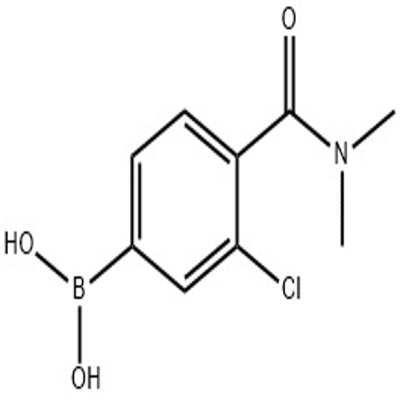-
Categories
-
Pharmaceutical Intermediates
-
Active Pharmaceutical Ingredients
-
Food Additives
- Industrial Coatings
- Agrochemicals
- Dyes and Pigments
- Surfactant
- Flavors and Fragrances
- Chemical Reagents
- Catalyst and Auxiliary
- Natural Products
- Inorganic Chemistry
-
Organic Chemistry
-
Biochemical Engineering
- Analytical Chemistry
- Cosmetic Ingredient
-
Pharmaceutical Intermediates
Promotion
ECHEMI Mall
Wholesale
Weekly Price
Exhibition
News
-
Trade Service
Diabetes is a well-known endocrine disease, and globally, the prevalence and incidence of diabetes have risen sharply, threatening human health.
but the specific cause and pathogenesis are not yet clear and may be due to the joint participation of genetic and environmental factors due to the selective destruction of immune-mediated islet B cells.
, insulin-sensitive β the pancreatic cells can protect diabetics from β cell failure.
January 27, 2021, the Heiko Lickert team at the Munich Center in Helmholtz, Germany, published an online article in the journal Nature entitled "Inceptors insulin signalling in β-cells to control glycaemia", which revealed the finding of a inhibitor in β cells of a new insulin signaling path, which controls blood sugar.
in this article, researchers identified 5330417C22Rik mRNA expressed strongly in the embryonic pancreas during the identification of new pancreatic regulators.
its associated gene is called the estrogen-induced gene (EIG121, also known as ELAPOR1 or KIAA1324), and in mice its genes are located on chromosome 3, with 22 exons transceiver transprinated through three selective shear variants, translated into a one-way type I transglobulin.
compared with the cysteine-rich domain (CRD) and insulin-like growth factor 1 (IGF1R) in insulin-rich cysteine domain (CRD) and insulin-like growth factor 1 (IGF1R) in β cells, bioinficial analysis of KIAA1324 revealed that the cysteine residue in CRD of the growth factor subject domain 4 was conservative.
addition, KIAA1324's ganache 6-phosphate-dependent subject (M6PR) domain is similar to cation-dependent M6PR (CD-M6PR) and cation non-dependent M6PR (CI-M6PR).
because of the similarities between KIAA1324 and INSR, IGF1R, and IGF2R in extracellulation domains and KIAA1324 inhibition functions, the researchers renamed KIAA1324 insulin inhibitor (encoded by gene Iir).
Then, the authors conducted a series of experiments that confirmed the quality and blood sugar control of the β cells regulated by the subject, and found that mice with a lack of the gene of the subject (Iir-/-) showed signs of hypersurgemia and hypoglycemia and died within hours of birth.
this suggests that Iir knockout leads to β cell proliferation and increased mass during pancreatic development, and affects glucose stability after birth.
molecular and cell analysis of Iir-/- mouse embryos and postpartum pancreas showed an increase in activation of INSR-IGF1R in Iir-/- pancreatic tissue, resulting in increased proliferation and mass of β cells.
Again, induced β-cell-specific Iir-/- knock-out in adult mice and ionosomes led to increased activation of INSR-IGF1R and increased proliferation of β cells, thereby increasing glucose tolerance in the body.
team also conducted a mechanism study of its effects and found that the subjects made it possible to mediat the internal swallowing of mesh proteins.
, the subject interacts with INSR-IGF1R to promote the internal swallowing of mesh proteins and desensitate the subject.
the use of monoclonal antibodies for the extracellular domain of the subject blocks this physical interaction, which causes the subject and INSR to remain on the mass membrane, thereby maintaining the inSR-IGF1R in the β cells.
in summary, these results suggest that the subject protects insulin-producing β cells from the activation of the composition pathway and identifies the subject as a potential molecular target for INSR-IGF1R sensitivity and diabetes treatment.
: . . . Ansarullah, Jain, C., Far, F.F. et al. Inceptor counteracts insulin signalling in β-cells to control glycaemia. Nature (2021)[2]







